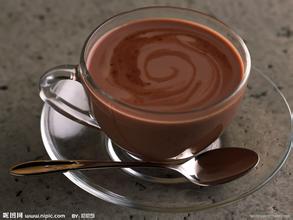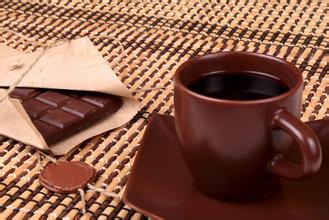Delicious and balanced Guatemala Antigua Coffee Flavor Manor characteristics of boutique coffee beans
The beauty of heaven and earth is a long history. Located in the northwestern province of Peton in northern Guatemala, there is an extremely important ancient site, the urban center of the Mayan civilization, which is now planned as Tikal National Park. The site is located in a tropical jungle. When you walk through the green jungle, step on the leafy path and listen to the screams of animals in the woods, you suddenly feel a sense of crossing in front of the ruins of the pyramids. It seems to have returned to an ancient era. There, the Mayans from 200 AD to 850 AD prayed, sacrificed, divined and lived. They used their wisdom to create a civilization that human beings still cannot guess.
In addition to the six magnificent pyramids, there are palaces, residences, stadiums and prison sites in the ancient city of Tikal. In 1979, UNESCO listed Tikal National Park as a cultural and natural heritage.
The beauty of heaven and earth is the clarity of the landscape. On the vast earth, the lake is like the eyes, baptizing the vicissitudes of life, and the mountains are like shoulders, carrying the legends of the world. And what a beautiful painting it will be when Xiongshan encounters a lake. Located in the highlands of central Guatemala, there is such a beautiful picture. 100 kilometers from the capital, Guatemala City, there is Lake Attilan, the deepest lake in Central America. This lake is a basin lake created in a group of volcanoes, surrounded by three volcanoes.
When standing in front of Lake Attilan in the early morning, it is as if you are in a fairyland where nature and human beings blend together. Nearby, the water fog from the lake dispersed, and in the distance, three volcanoes loomed in the clouds, while around them, people from the local village washed their hair by the water, starting a day's life. The sun rises slowly, the sun shines on the earth, the clouds gradually dissipate, the green mountains and lively villages are reflected in the blue lake, and the lake and mountain people complement each other.
Guatemalan coffee beans are mostly cultivated in high-altitude volcanic soils belonging to the most advanced Arabica (Arabica) variety. Due to the long ripening period, the beans are medium and dense (Guatemalan coffee beans are graded not on the basis of particle size, but on the basis of shortcomings), and the bean color is dark turquoise. The unique sour taste of fragrance, mellow, sweetness and freshness is characterized by the aroma and taste of coffee beans hidden in its sour taste. Therefore, coffee beans with this characteristic can be called high-quality coffee beans. The name of the product is suitable for the taste characteristics of baking degree.
The average elevation of dangerous countries is high, with coffee belts distributed above 1500 meters and between 14 and 16 degrees north latitude, it is the easiest to grow extremely hard beans, all of which are washed, of which 45% belong to fine grade, the proportion is quite high, and there are also a small amount of Robusta.
The varieties of coffee in dangerous countries are mainly bourbon, Tibica, Kaduai and Kaddura, and there are also a small amount of yellow bourbon, Rosa and Pacamara. They are quite diverse, but they can retain the ancient Dibica and Bourbon. Guatemala is also commendable that it borders Mexico to the north, Honduras and El Salvador to the south, the Caribbean to the east and the Pacific Ocean to the west. There are tropical rain forests, volcanic geology, plateau valleys and changeable microclimate. Guatemalan coffee once enjoyed a reputation as the best quality coffee in the world. The extra-hard coffee beans here are full-grained, delicious and balanced, and the coffee made with it is pure and rich.
There are few places in the world that offer a variety of high-quality coffee beans like those produced in Guatemala. The excellent quality of Guatemalan coffee beans is due to the unique conditions of their producing areas, including different climate change in each region, rich soil formed by volcanoes, abundant natural water resources, high-altitude mountains and shady and moist forests.
Guatemala has seven major coffee producing areas: Antigua,Coban,Atitlan,Huehuetenango,Fraijanes,Oriente and San Marcos.
The coffee beans in each producing area have their own characteristics, and they have won a lot of praise for Guatemala in the international community, especially the perfect harmony of Antigua's sour, sweet and mellow texture; add a touch of smoke and emphasize its mystery, and you will have a reason not to look for substitutes everywhere after tasting

Important Notice :
前街咖啡 FrontStreet Coffee has moved to new addredd:
FrontStreet Coffee Address: 315,Donghua East Road,GuangZhou
Tel:020 38364473
- Prev

Unique strong aroma of Costa Rican Saint Roman Manor Coffee Flavor and taste characteristics of boutique coffee
Costa Rica is one of the first countries in the Americas to establish a democratic system, and the idea of freedom and equality is deeply rooted. Costa Ricans love peace and oppose violence. As early as December 1, 1948, Costa Rica announced the abolition of the armed forces and the establishment of the National Guard, becoming the first country in the world without an army. [8] in 2007, there were 18000 police officers, which put an end to the possibility of soldiers interfering in politics.
- Next

Introduction to the characteristics of Panamanian Cupid Coffee Flavor Manor with thick, sour and floral flavor
Panama is rich in forest resources and has many tree species, including valuable wood such as mahogany, cedar, teak, mahogany, and cedar. The forest area of eastern Dalian Province is the most widely distributed, but it has not been fully developed due to lack of market and for reasons such as national defense and protection of the natural ecological environment. [5] according to FAO estimates in 2010, the forest area of Panama is 4.29 million hectares, accounting for the land area.
Related
- Detailed explanation of Jadeite planting Land in Panamanian Jadeite Manor introduction to the grading system of Jadeite competitive bidding, Red bid, Green bid and Rose Summer
- Story of Coffee planting in Brenka region of Costa Rica Stonehenge Manor anaerobic heavy honey treatment of flavor mouth
- What's on the barrel of Blue Mountain Coffee beans?
- Can American coffee also pull flowers? How to use hot American style to pull out a good-looking pattern?
- Can you make a cold extract with coffee beans? What is the right proportion for cold-extracted coffee formula?
- Indonesian PWN Gold Mandrine Coffee Origin Features Flavor How to Chong? Mandolin coffee is American.
- A brief introduction to the flavor characteristics of Brazilian yellow bourbon coffee beans
- What is the effect of different water quality on the flavor of cold-extracted coffee? What kind of water is best for brewing coffee?
- Why do you think of Rose Summer whenever you mention Panamanian coffee?
- Introduction to the characteristics of authentic blue mountain coffee bean producing areas? What is the CIB Coffee Authority in Jamaica?

